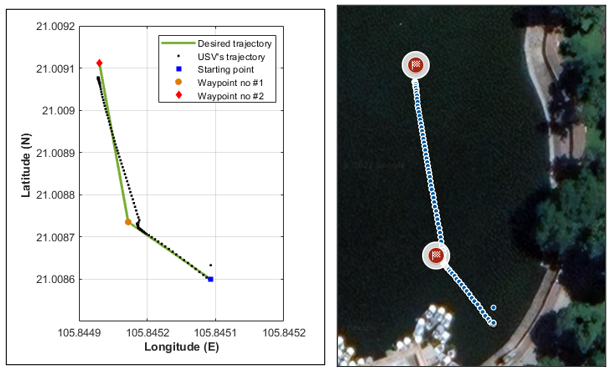Design and Implementation of an Autonomous USV in Bathymetric Surveys
Keywords:
usv, unmanned surface vehicle, path-planning, path-following, bathymetric surveyAbstract
This paper describes the system configuration and control method of an autonomous Unmanned Surface Vehicle (USV) and its implementation in bathymetric surveys. The USV prototype, power unit, control unit, sensory system and communication system are designed and constructed. The control method for a path-following problem is designed and then embedded into the USV’s control unit. The complete USV is then implemented in bathymetric surveys. During each survey, the ground control station (GCS) sends a survey request containing the survey path’s parameters, which consist of the coordinates defining the area of interest and the map resolution. Upon receiving the survey request, the USV automatically calculate the set of waypoints from the parameters in the request. The USV move to each waypoint, collecting the depth data in the process. The USV’s coordinates and the corresponding depth the is continuously sent to the GCS. The survey data is saved on the GCS and then used to build the depth map of the area of interest.
Downloads
References
J. E. Manley, Unmanned surface vehicles, 15 years of development, OCEANS 2008, vol. 2008 Suppl., Sep. 2008.
Z. Liu, Y. Zhang, X. Yu, C. Yuan, Unmanned surface vehicles: An overview of developments and challenges, Annu. Rev. Control, vol. 41, pp.71-93, Feb. 2016.
Xuan-Dung Nguyen, Trung-Kien Vo, Manh-Tuan Ha*, Simplified Trajectory-Tracking Method for An Under-Actuated USV, JST:ETSD, vol 32, no. 2, pp. 57-64, 2022.

Downloads
Published
How to Cite
Issue
Section
License

This work is licensed under a Creative Commons Attribution-ShareAlike 4.0 International License.
All papers should be submitted electronically. All submitted manuscripts must be original work that is not under submission at another journal or under consideration for publication in another form, such as a monograph or chapter of a book. Authors of submitted papers are obligated not to submit their paper for publication elsewhere until an editorial decision is rendered on their submission. Further, authors of accepted papers are prohibited from publishing the results in other publications that appear before the paper is published in the Journal unless they receive approval for doing so from the Editor-In-Chief.
IJISAE open access articles are licensed under a Creative Commons Attribution-ShareAlike 4.0 International License. This license lets the audience to give appropriate credit, provide a link to the license, and indicate if changes were made and if they remix, transform, or build upon the material, they must distribute contributions under the same license as the original.





